
Ylang-ylang Oil
Description: Ylang-ylang is native to Indonesia and the Philippines. The flowers are a traditional adornment in the Far East. Their scent is thought to have aphrodisiac qualities. The flowers and essential oil are sedative and antiseptic. The oil has a soothing effect, and its main therapeutic uses are to slow an excessively fast heart rate and to lower blood pressure. With its reputation as an aphrodisiac, ylang-ylang may be helpful in treating impotence. Main Properties: Antiseptic, aromatic, regulates blood pressure.
...more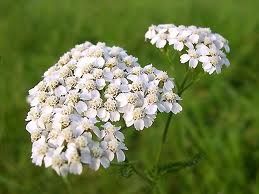
Yarrow European plant
Description: Yarrow is a native European plant, with a long history as a wound healer. In classical times, it was known as herba militaris,being used to staunch war wounds. It has long been taken as a strengthening bitter tonic and all kinds of bitter drinks have been made from it. Yarrow helps recovery from colds and flu and is beneficial for hay fever. It is also helpful for menstrual problems and circulatory disorders. Main Properties: Antispasmodic, astringent, bitter tonic,increases sweating, lowers blood pressure, reduces fever,mild diuretic and urinary antiseptic
...more
Vetiver Oil
Vetiver is distilled from the rootlets and is imported from Haiti. It has a heavy, woodsy, earthy-sweet scent.Some traditional uses: for muscular aches, to increase circulation, to relieve melancholy and nervous tension,for restful sleep. Emotional profile: for fears,obsessions, scattered thoughts, anger and hurt,unworthiness, neurotic behavior, addiction. Blends with:sandalwood, ylang ylang, clary sage, lavender, patchouli,jasmine and rose.
...more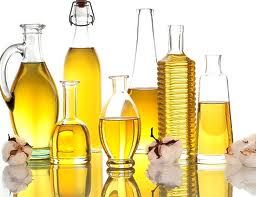
vegetables oil
Description : Used vegetable oil has a brownish color to it. When filtered, it becomes transparent, but still retains the brownish color throughout. Characteristics and Constituents:The viscosity of plant and animal fats and oils varies from hard crystalline solids to light oils at room temperature. In most cases, these ‘oils’ or ‘fats’ are actually a complex mixture of various fatty acids triglycerides, often with the various components having widely varying melting points. T Actions and Uses : Conversion of waste oils and fats to biodiesel fuel is one possibility but poses some difficulties such as in the use of toxic or caustic materials and by-product disposal. Conversion to biodiesel may also decrease the economic attractiveness of using waste oils as fuels.
...more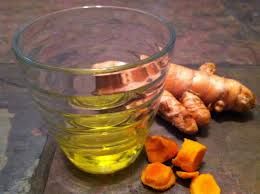
Turmeric Oil
Description: Turmeric is native to India and southern Asia where it is extensively cultivated. Best known for its bright yellow color and spicy taste to lovers of Indian food, its medicinal value is not so well known. However, recent research has confirmed the effects traditionally associated in ancient practices in the treatment of digestive and liver problems. The herb has also been shown to inhibit blood-clotting, relieve inflammatory conditions and help lower cholesterol levels. Main Properties: Stimulates secretion of bile,anti-inflammatory, eases stomach pain, antioxidant, antibacteria
...more
Turmeric
Description : It is a tall herb with large root stocks and consists of rhizomes which are ovate, oblong or pyriform and often short-branched. Rhizome may be 2 to 6 em long and 1 to 1.7 cm thick. Leaves very large, in tufts upto 1.2 ft. Flowers in autumnal spikes 10 to 15 cm long. The plant is a native of Southern Asia and is cultivated throughout the warmer parts of the world. It is grown on a large scale in India, China and East Indies.Characteristics and ConstituentsThe yellow pigmented fraction, isolated from the rhizomes, contains the curcumins belonging to the dicinnamoyl- methane group. An aromatic oil, turmeric oil, composed of terpene- rocarbon-derivatives and sesquiterpenic ketones has also been isolated. Actions and Uses : Water extract of turmeric showed significant anti- inflammatory activity in acute carrageenin-induced oedema. LD(50) was 4.7 mg/kg body weight. In the subacute models LD(50), was 10 to 20 mg/kg. Anti-inflaininatory activity of the active principle curcumin was similar to cortisone and phenyl-butazone in carrageenin-induced oedema in rats with an equivalent dose. Stabilizing effect on lysosomal membranes also has been reported. Sodium curcuminate in a dilution of 1 in 1 million inhibited Micrococcus pyogenesge. Sodium curcuminate increased the bile secretion by 100% in anaesthetized dogs. Hepatoprotective effect of 50% ethanol extract of Curmma 1..g. was shown in CCL,-induced liver lesions in mice and in primary cultured rat hepatocytes. Application of turmeric powder over septic as well as aseptic wounds in rats and rabbits accelerated the process of healing to the extent of 23-24% in both the cases. No side effects were observed with curcumin in a dose of 1200 mg/day for two weeks in 18 patients with rheumatoid arthritis. No significant change in blood pressure, haemoglobin, hepatic function tests and renal function tests were observed in these patients. Mild dryness of the mouth and throat was complained of by a few patients of bronchial asthma treated with turmeric powder in a dose of 12 gm/day. This symptom was controlled with a reduction in the dose. Curcumin in a dose of 1800 mg/kg/day p.o. ninety days in rats and 800 mg/kg/day p.o. for similar period in monkeys was found to he safe. No evidence of skeletal or visceral malformations was observed in mice with 1600 mg/kg and in rabbits with 600 mg/ kg on days 6-15 post coitus.
...more
Thyme Oil
Description: Thyme occurs in the west Mediterranean to the southwest Italy.The herb was known to the Sumerians, used by the Egyptians, Greeks and Romans. Thyme was praised by the herbalist Nicholas Culpeper (1616-1654) as "a notable strengthener of the lungs". Its main medicinal application is in treating coughs and clearing congestion.Many current formulas for mouth washes and vapor rubs contain thymol, one of the constituents found in thyme. It also improves digestion, destroys intestinal parasites and is an excellent antiseptic and tonic. Main Properties: Antiseptic, tonic, relieves muscle spasm,expectorant.
...more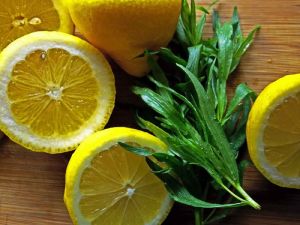
Tarragon Oil
Description: Tarragon is probably native of southern Europe or the steppes of Asia. Historians believe that tarragon reached Europe brought into Spain by invading Mongols. Tarragon is widely used as a herb in cooking. In French, it is sometimes known as herbe au dragon, because of its reputed ability to cure serpent bites. While tarragon stimulates the digestion, it is reputed to be a mild sedative and has been taken to aid sleep. With its mild menstruation-inducing properties, it is taken if periods are delayed. The root has traditionally been applied to aching teeth. Main Properties: Anti-inflammatory, digestive.
...more
Sesame oil
Description: Native to Africa, sesame is now cultivated in many tropical and sub-tropical areas of the world. In ancient Egypt, the seeds were eaten and also pressed to yield oil, which was burned in lamps and used to make ointments. Sesame is used in China to redress afflictions of the liver and kidneys. The seeds are prescribed for problems such as dizziness, tinnitus (ringing in the ears), and blurred vision. Owing to their lubricating effect within the digestive tract, the seeds are also considered a remedy for constipation. Sesame seed oil benefits the skin and is used as a base for cosmetics. A decoction of the root is used in various traditions to treat coughs and asthma. Main Properties: Digestive, aromatic, antispasmodic.
...more
Rosewood Oil
Rosewood is distilled from the wood and imported from Bazil. It has a sweet, woodsy-floral, spicy scent. Some traditional uses:to relieve stress and balance the central nervous system,for easing jet lag, to create a calm for meditation, for easing colds and coughs, to stimulate the immune system,as an aphrodisiac and in skin care. Blends with: lavender,orange, lemon, tangerine, sandalwood, cedarwood,palmarosa, geranium and most oils.
...more
Psyllium Husk
Description : Seed Hard, transluscent, boat shaped structure, upto 8 mm long and 1 mm broad. Surface glossy and shining having a pinkish brown colour. There is an oval spot in the centre of convex(dorsal) surface. On the concave (ventral) surface. A deep furrow is seen with a hilum which appears as a red spot in the centre. Odour - nil: taste - mucilagenous. Husk Thin, curved or boat shaped structure of papery texture, representing the seed coat. It measures upto 4 mm long and 1mm broad at the broadest point. The material consists of a lot of broken pieces also. Odour - nil:taste - mucilagenous. Characteristics and ConstituentsThe seeds contain mucilage (10 - 20%) as the major constituent, together with a fatty oil, protein, oxalic and mucic acids, invertase, emulsin and the glycosideaucubin. The mucilage can be extracted from the seeds or seed coat with cold or boiling water, its composition depending on the method of preparation. It is composed of xylose, arabinose and galacturonic acid, the first being the principal sugar. Actions and Uses : The seeds contain mucilage (10 - 20%) as the major constituent, together with a fatty oil, protein, oxalic and mucic acids, invertase, emulsin and the glycosideaucubin. The mucilage can be extracted from the seeds or seed coat with cold or boiling water, its composition depending on the method of preparation. It is composed of xylose, arabinose and galacturonic acid, the first being the principal sugar.
...more
Peppermint Oil
Peppermint's origin is a mystery, but it has been in existence for a long time - dried leaves were found in Egyptian pyramids dating from around 1000 BC. It was highly valued by the Greeks and Romans, but only became popular in Western Europe in the 18th Century. Peppermint tea helps with indigestion and relaxes the muscles of the digestive tract. Peppermint's chief therapeutic value lies in its ability to relieve wind, flatulence, bloating and colic,though it has many other applications. Studies have shown that it relieves colon spasms and helps to cure ulcers.Peppermint also eases nervous headaches. Menthol, its main constituent, has antibacterial properties. Externally, the essential oil is used in balms and liniments to stimulate hot and cold nerve endings and increase local blood flow. Main Properties: Carminative, relieves muscle spasms, increases sweating, stimulates secretion of bile, antiseptic.
...more
Paychouli Oil
Description: Native to Malaysia and the Philippines, Patchouli is now cultivated in tropical and sub-tropical regions around the world. Patchouli has been used extensively in Asian medicine, apperaring in the Chinese, Indian and Arabic traditions. The oil is widely employed as a fragrance and,in India, as an insect repellent. Patchouli is used in herbal medicine in Asia as an aphrodisiac, antidepressant and antiseptic. It is also employed for headaches and fever. Patchouli essential oil is used in aromatherapy to treat skin complaints. It is thought to have a regenerative effect on skin tone and to help clear conditions such as eczema and acne. The oil may also be used for varicose veins and hemorrhoids. Main Properties : Antiseptic, aromatic, antidepressant.
...more
Palmarosa Oil
Latin name: Cymbopogon martini. Family name : Graminacaea Description: Palmarosa oil is distilled from the tops of the plants and is imported from Nepal. It has a flora-rose grassy scent.Palmarosa is used today in Ayurvedic medicine. Some traditional uses: to stimulate cellular regeneration and moisturize skin, for nervous exhaustion and stress conditions, to calm and uplift. Emotional profile: for irritability, apathy and tension. Blends with: geranium,florals, cedarwood and sandalwood.
...more
Olive Oil
Description: The olive was probably first cultivated in Crete in around 3500 BC. The leaves have been used since those times to clean wounds. Olive leaves lower blood pressure and help to improve the function of the circulatory system. They are also mildly diuretic and may be used to treat conditions such as cystitis. Possessing some ability to lower blood sugar levels, the leaves have been taken for diabetes. The oil is nourishing and improves the balance of fats within the blood. It is traditionally taken with lemon juice in teaspoonful doses to treat gallstones. The oil has a generally protective action on the digestive tract and is useful for dry skin. Externally, it is a good, although sticky, carrier oil for essential oils. Main Properties: Digestive, diuretic, anti-inflammatory.
...more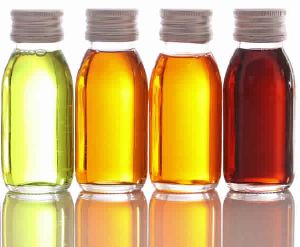
nutmeg seed oil
Distilled from the nutmeg seed and imported from East Indies. It has a spicy, nutmeg fragrance. Some traditional uses: for warming muscles, easing muscle aches and pains, to invigorate or stimulate the mind, an aphrodisiac, to stimulate heart and circulation, for relieving nervous fatigue. Avoid during pregnancy and use with care (can be moderately toxic if over-used). Emotional profile: For focus, relieving grief, guilt, agitation, to improve self-image. Blends with coriander, bay leaf, petitgrain,lime, orange, geranium, rosemary and clary sage.
...more
Neem Oil
Margosic acid, nimbin, nimbinin, nimbidin Margosin,a crystalline principle, and tannic acid. Action & Uses : Bitter tonic, astringent,antipergative, antiseptic used in ulcers and eczema, skin diseases and in rheumatism. The oil obtained from the fruit is used for burning, that from the bark is used medicinally and is anthelmintic and emetic; it is applied externally for rheumatism. The decoction of Azadirachta is said to be cathartic and in large doses slightly narcotic. It is a stomachic and taps it for toddy. An ointment to destroy lice is made from the pulp and is also used for scald head and other skin diseases. It is useful for cramps, obstinate ulcers, etc.
...more
Lemon Oil
Description: A native from Asia, probably from India, it is now widely cultivated in Italy, California and Australia. Lemon was unknown to the ancient Greeks arriving in Europe probably brought by Roman soldiers returning from Asia Minor. It is one of the most important and versatile natural medicines for home use. A familiar food as well as a remedy, it has a high vitamin C content that helps improve resistance to infection, making it valuable for colds and flu. It is taken as a preventative for many conditions, including stomach infections, circulatory problems and arteriosclerosis. Lemon juice and oil are effective in killing germs. It decreases inflammation and improves digestion. MAIN PROPERTIES: Antiseptic, anti-rheumatic, antibacterial,antioxidant, reduces fever.
...more
Lavender Oil
Description: Lavender is native to the Mediterranean region and is cultivated in France, Spain and elsewhere. It has been used for aromatic purposes by the Romans in washing water and baths. This herb has uses in culinary, cosmetics and medicine. It is effective to cure headaches, especially when related to stress, to clear depression associated with weakness and depression. Externally, lavender oil has been used as a stimulating liniment to help ease aches and pains of rheumatism MAIN PROPERTIES: Carminative, relieves muscle spasms, antidepressant, antiseptic and antibacterial, stimulates blood flow.
...more
Laural Berry Oil
Description: Native to the Mediterrenean region, bay laurel is know cultivated all over the world. Bay laurel was sacred to the gods Apollo and Aesculapius, who together oversaw healing and medicine. The herb was thought to be greatly protective and healing. An infusion of the leaves was taken for its warming and tonic effect on the stomach and bladder, and a plaster made from the leaves was used to relieve wasp and bee stings. Bay laurel is used mainly to treat upper digestive tract disorders and to ease arthritic aches and pains. It is settling to the stomach and has a tonic effect, stimulating the appetite and the secretion of stive juices.
...more
Juniper Oil
Description: Juniper is found in Europe, south-western Asia and North America.Juniper is tonic, diuretic and strongly antiseptic within the urinary tract. It is a valuable remedy for cystitis,and helps relieve fluid retention, but should be avoided in cases of kidney disease. In the digestive system,juniper is warming and settling, easing colic and supporting the function of the stomach. Taken internally or applied externally, juniper is helpful in the treatment of chronic arthritis, gout and rheumatic conditions.Applied externally as a diluted essential oil, it has a slightly warming effect on the skin and is thought to promote the removal of waste products from underlying tissues. MAIN PROPERTIES: Diuretic, anti-microbial, carminative, anti-rheumatic.
...more
Green Tea
Description : The leaves of Camellia Senesis are small of length 5.5 - 6.1cm by width 2.2 - 2.4 cm and the trunk of the tree is the bush type. The cultivars of this type can survive in winter as cold as -12'C and are cultivated in the temperate regions.Characteristics and ConstituentsThe major constituent is Polyphenols. The other constituents are carotene, riboflavin, nicotinic acid, pantothenic acid and ascorbic acid, malic acid, oxalic acid kaempferol, quercetin, theophylline, theobromine xanthine, hypoxanthine, adenine, gums, dextrins and inositol. Actions and Uses : There is a growing body of evidence that green tea and the polyphenols therein, possess inhibitory effects against cancer and act as powerful antioxidants. Polyphenols with their natural antioxidant ability are widely used for the prevention of oxidation of edible oils or discoloration of reddish color in foods.
...more
Grape Fruit Oil
Grapefruit oil is cold pressed from the peel of the U.S. grapefruit.It has a fresh, sweet, citrus scent. Some traditional uses: to lift melancholy, relieve muscle fatigue, as an astringent for oily skin, to refresh and energize the body, stimulate detoxification, as an airborne disinfectant. Emotional profile: for use with self-doubt and criticism, dependency, frustration and grief. Blends with: lemon, palmarosa, bergamot, neroli, rosemary,cardamon, geranium, lavender and cypress.
...more
Ginger Oil
Description: Original from Central Asia, garlic is now cultivated worldwide. It was widely known by the ancients, being found in Egyptian tombs and used by Greeks and Romans.Recognized for its pungent odor and taste, garlic is a powerful home medicine for the treatment for a host of health problems. It is one of the most effective anti-biotic plants available, acting on bacteria, viruses and alimentary parasites. It counters many infections,including those of the nose, throat and chest. Garlic is also known to reduce cholesterol, helps circulatory disorders, such as high blood pressure, and lower blood sugar levels, making it useful in cases of late-onset diabetes. MAIN PROPERTIES: Antibiotic, expectorant, diaphoretic,hypotensive, antispasmodic, expels worms.
...moreBe first to Rate
Rate This